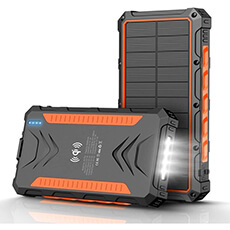I'm pretty sure that the B&D batteries contain smart charging circuitry consisting of an lvc, hvc, and individual cell balancing after looking at their patent:
While they don't reveal specific voltages, the patent seems clear enough, although to save brain cells, perhaps only read the claims and not the summary.
The lvc appears to be smart, taking into account individual cell voltages and comparing it to an average stack voltage before throwing the sleep trigger.
What isn't clear until I reread it a hundred times, is if there is an allowable cell voltage-delta to trigger the bad battery flag and stop the charge, or if it will spend an inordinate amount of time trying to charge and balance a pack that is unrealistically out of balance due to major degradation of one or more cells.
In addition, I'm still not sure of any maintenance mode, where cell balancing might occur well after the initial balance charge is finished, and cells may drop out of balance say after only 12 hours due to unforeseen circumstances in a static state.
Chris - I could just brain you for getting me into this. I knew I would go too far.
While they don't reveal specific voltages, the patent seems clear enough, although to save brain cells, perhaps only read the claims and not the summary.
The lvc appears to be smart, taking into account individual cell voltages and comparing it to an average stack voltage before throwing the sleep trigger.
What isn't clear until I reread it a hundred times, is if there is an allowable cell voltage-delta to trigger the bad battery flag and stop the charge, or if it will spend an inordinate amount of time trying to charge and balance a pack that is unrealistically out of balance due to major degradation of one or more cells.
In addition, I'm still not sure of any maintenance mode, where cell balancing might occur well after the initial balance charge is finished, and cells may drop out of balance say after only 12 hours due to unforeseen circumstances in a static state.
Chris - I could just brain you for getting me into this. I knew I would go too far.


Comment